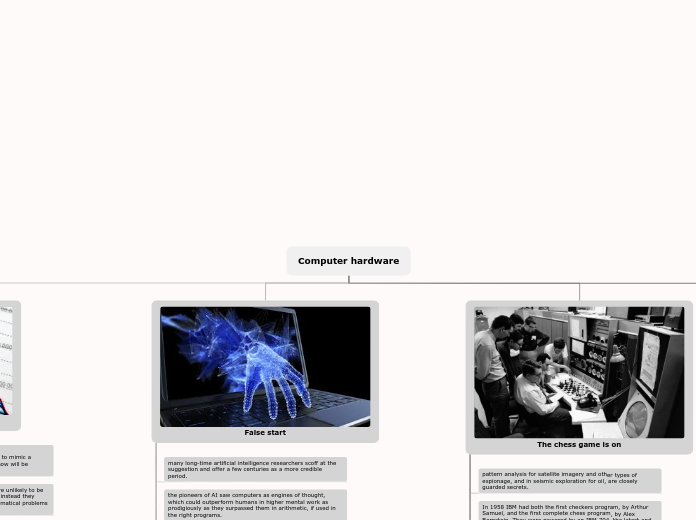Computer hardware

Brains, eyes and machines
About 100 robot vision programs are needed
computer instructions to derive detections from a
border only or motion from video images comparable.
100 million instructions are needed to
make a million detections and 1,000 MIPS to repeat them
ten times per second to match the retina.
Thirty years of computer vision reveals that 1 MIPS
10 MIPS can track complex grayscale patches
100 MIPS can follow moderately unpredictable characteristics like highways
1,000 MIPS will be suitable for coarse-grained three-dimensional spatial awareness
10,000 MIPS can find three-dimensional objects in clutter, suggested by various "container selection" demos
10,000 MIPS can find three-dimensional objects in clutter, suggested by various "container selection" demos
In 1992, Redi's group demonstrated a program called Sphinx II on a 15 MIPS workstation with 100 MIPS of specialized signal processing circuitry.
Robot vision programs around 100 computer instructions are needed to derive single-edge or motion detections from comparable video images. It takes 100 million instructions to make a million detections and 1,000 MIPS to repeat them ten times per second to match the retina.
Matching general human behavior will require around 100 million MIPS of computer power.
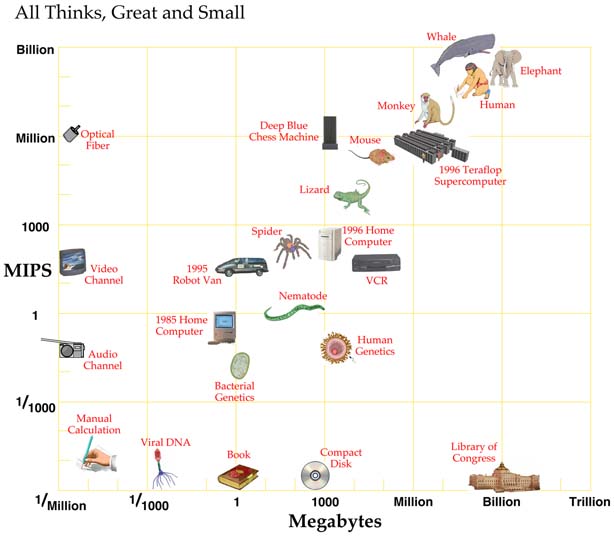
Extrapolation
Today's largest supercomputers are
to a factor of one hundred to have the power to mimic a human mind. His successors a decade from now will be powerful enough.
Machines costing tens of millions of dollars are unlikely to be wasted doing what any human can do, when instead they could be solving pressing physical and mathematical problems that nothing else can touch.
Machines with human-like performance will make economic sense only when they cost less than humans, say when their "brains" cost around $ 1,000. When that day came?
The number of MIPS on $ 1000 computer from 1900 to present. The constant improvements in mechanical and electromechanical calculators before World War II had multiplied the speed of calculation by a thousand over manual methods from 1900 to 1940.
The pace accelerated with the advent of electronic computers during the war, and from 1940 to 1980 it multiplied by a million.
The pace has been even faster since then, a pace that would make human-like robots possible before the middle of the next century.
The keynote for advancing computing is miniaturization: smaller components have less inertia and operate faster with less energy, and more of them can be packed into a given space.
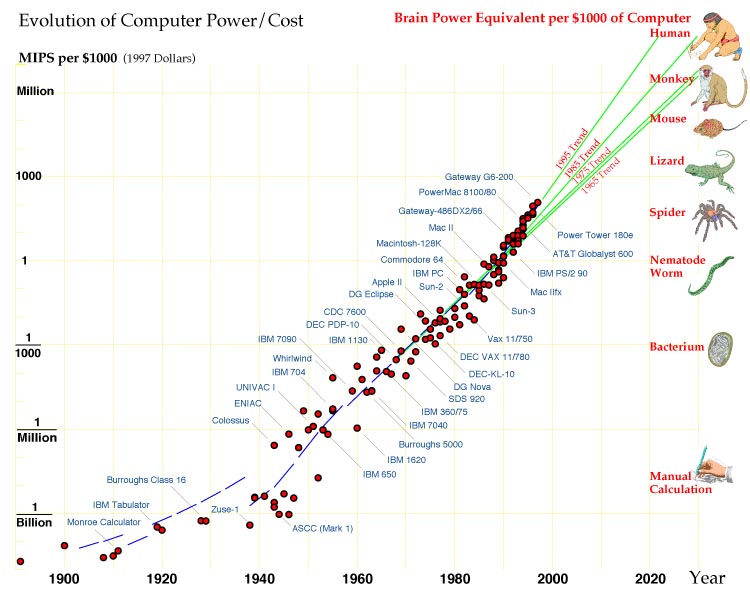
False start
many long-time artificial intelligence researchers scoff at the suggestion and offer a few centuries as a more credible period.
the pioneers of AI saw computers as engines of thought, which could outperform humans in higher mental work as prodigiously as they surpassed them in arithmetic, if used in the right programs.
the unspectacular performance of early reasoning and translation programs had made the rose bloom, but the unexpected launch by the Soviet Union of Sputnik
Research in artificial intelligence was forced to tighten its belts and beg for small grants and unusual contracts from science agencies and industry.
Many groups purchased the new Vax computers from Digital, costing $ 100,000 and providing 1 MIPS. By the middle of the decade, workstations with personal computers had appeared.
Individual researchers reveled in the luxury of having their own computers, avoiding the delays of timeshare machines. A typical workstation was a Sun-3, which cost around $ 10,000 and provided approximately 1 MIPS.
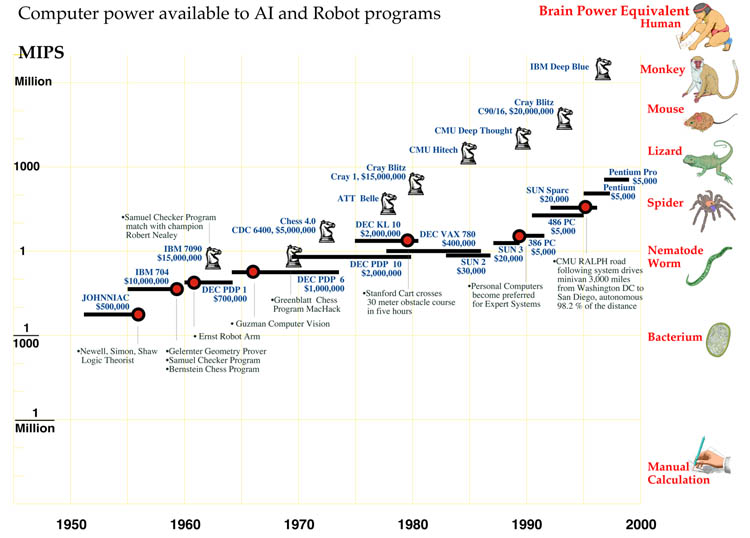
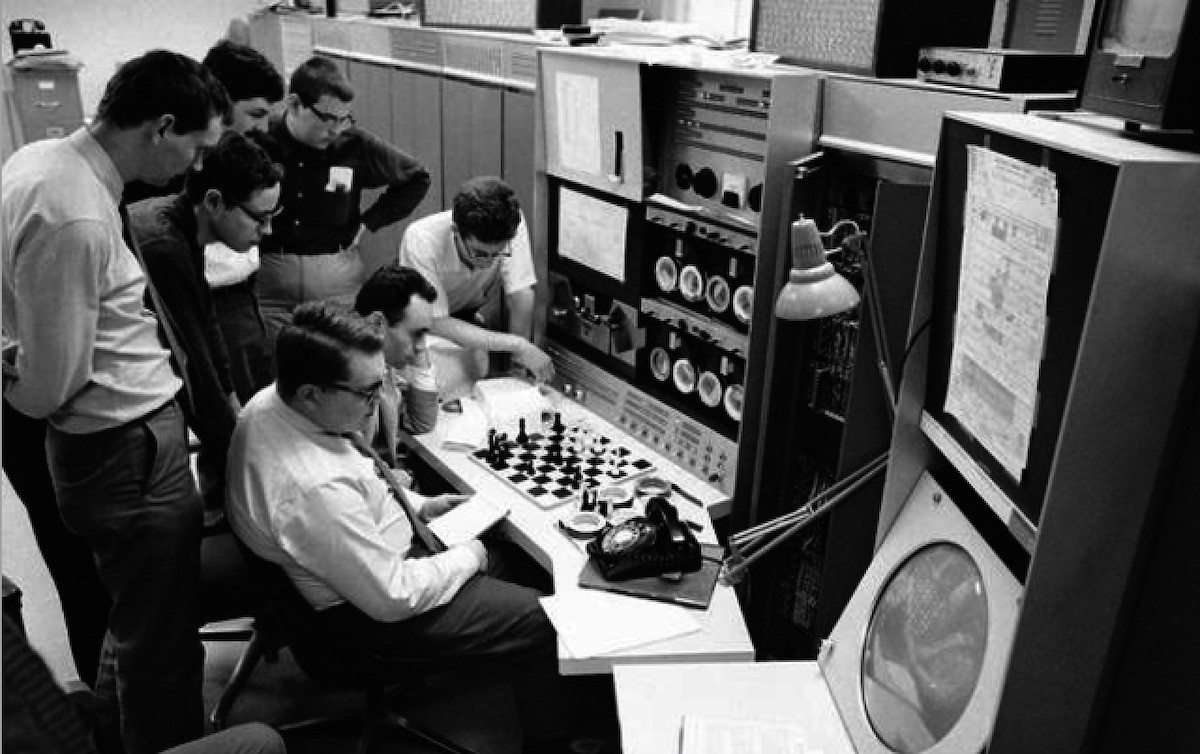
The chess game is on
pattern analysis for satellite imagery and other types of espionage, and in seismic exploration for oil, are closely guarded secrets.
In 1958 IBM had both the first checkers program, by Arthur Samuel, and the first complete chess program, by Alex Bernstein. They were powered by an IBM 704, the latest and greatest vacuum tube computer.
Bernstein's program played atrocious, but Samuel's program, which automatically learned his board's scoring parameters, was able to beat Connecticut's checkers champion Robert Nealey.
Since 1994, Chinook, a program written by Jonathan Schaeffer of the University of Alberta, has consistently surpassed the world champion in human checkers. But the ladies are not very glamorous and this omen received little attention.
In May 1997 he met an improved version of the machine. That February, Kasparov had triumphed over a grandmasters field in a prestigious tournament in Linares, Spain, reinforcing his reputation as the best player in history and increasing his chess rating beyond 2,800.
He prepared for the computer game in the intervening months, partly by playing against other machines.
Kasparov won a long first game against Deep Blue, but lost the next day due to masterful movements of the machine. Then came three grueling draws and a final game, in which Kasparov, visibly shocked and angry, resigned early, in a weak position. It was the first competitive match that he lost.
sequences of motion that machines can explore. Note that chess machines achieved world champion performance as their (specialized) processing power reached about 1/30 human, per our computer-sized brain.
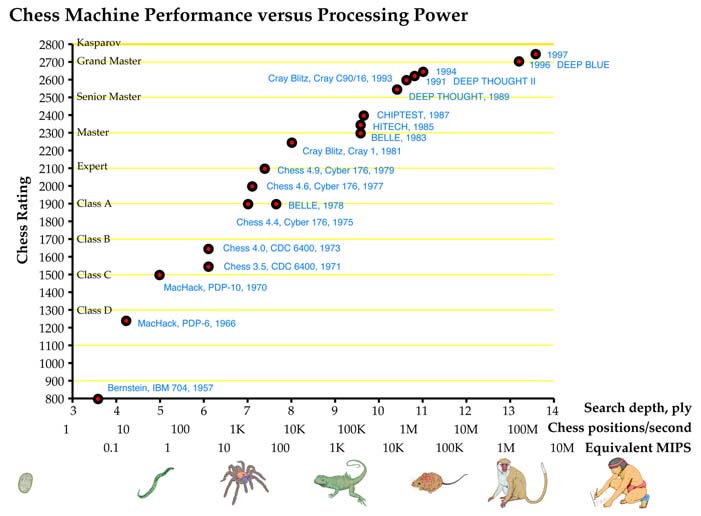

The great flood
Computers are universal machines, their potential is spread evenly over an unlimited range of tasks.
Human potentials, on the other hand, are strong in areas important to survival, but weak in things far away. Imagine a "landscape of human competition," with lowlands labeled "arithmetic" and "rote memorization."
We all live on solid mountain tops, but it takes a lot of effort to get to the rest of the terrain, and only a few of us work on each patch.
Improving computer performance is like water slowly flooding a landscape. Half a century ago it began to drown the lowlands, driving away human calculators and log clerks, but leaving most of us dry.
We feel safe on our peaks, but, at the current rate, those too will be submerged another half century from now.
Our representatives in the foothills of chess and theorem proofing report signs of intelligence. Why didn't we get similar reports decades earlier, from the lowlands, when computers surpassed humans in arithmetic and rote memorization?
The mental steps that underlie the good human game of chess and the proof of theorems are complex and hidden, putting a mechanical interpretation out of reach. Those who can follow the play naturally describe it in mentalistic language, using terms like strategy, understanding, and creativity.

